Part III. Italy
Chapter 43.Three Kings [January 6, 1348]
Cultural Explanations
 |
Part III. Italy Chapter 43.Three Kings [January 6, 1348] Cultural Explanations |
|
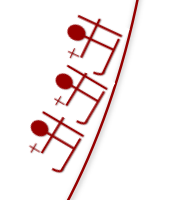 |
In this chapter Bávlos learns to about the Three Kings and the erroneous way the Italians view the stars. |
| Three Kings/Gállá Sons, skiing with crosses |
In this chapter, Bávlos hears about the Feast of the Epiphany, while learning about differences in the astral lore of Italians and Sámi. Beneath the many differences, Bávlos perceives a common narrative, one which remains clear and logical in his own culture's tradition and which has become comically distorted in the south. Anxious to leave the city that has brought a curse on itself by stealing graveyard dirt, he notices that many of the locals are becoming ill.
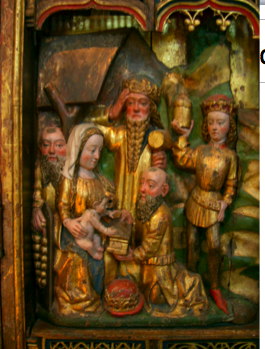 |
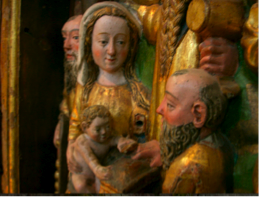 |
The astral lore presented in this chapter is all accurate for Sámi and Italian cultures. The differences that Bávlos notices in the times and places for the rising and setting of the stars is also accurate for January 1348. The following chart may help you follow the differences between the constellations as understood by Bávlos and Buonamico.
| Sámi name | Italian name | American name, plus link | |
| Gállá | Sirio Dog Star |
Sirius | 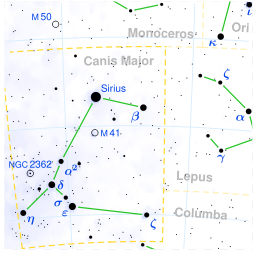 |
| Gállá's Sons | i Tre Re The Three Kings |
Orion's Belt |  |
| Favtna | Boote Plowman |
Boötes | 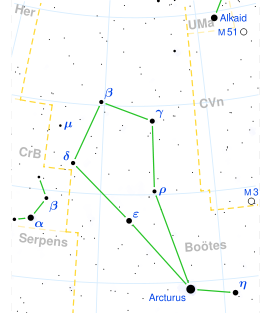 |
| Favtna's Bow | Aratro Plowman's Plough |
Big Dipper's Handle | 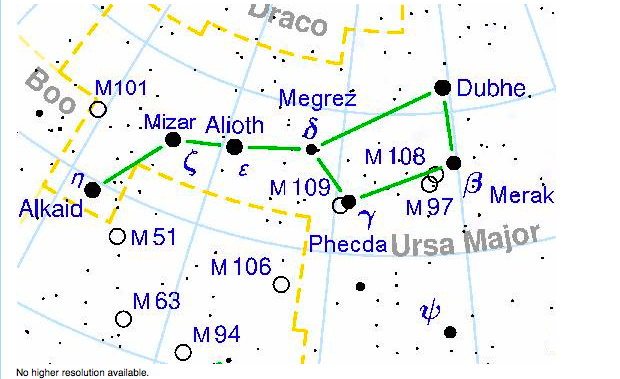 |
| Stállu/ Riibmagállis | Capella, She-goat |
Capella | 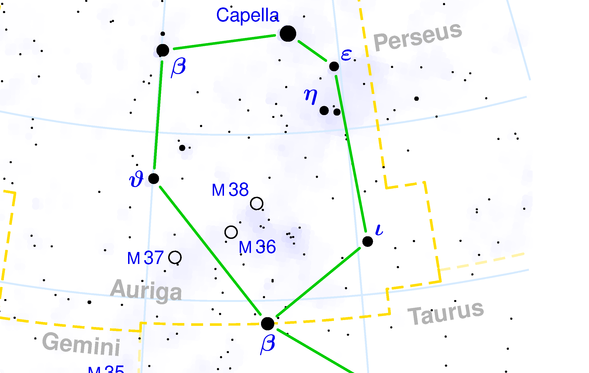 |
| Great Elk | Toro, The Bull |
Taurus | 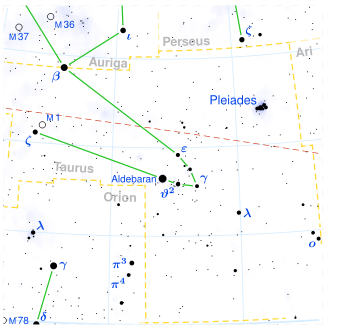 |
| Sky Nail | Stella Maris | North Star/Polaris | 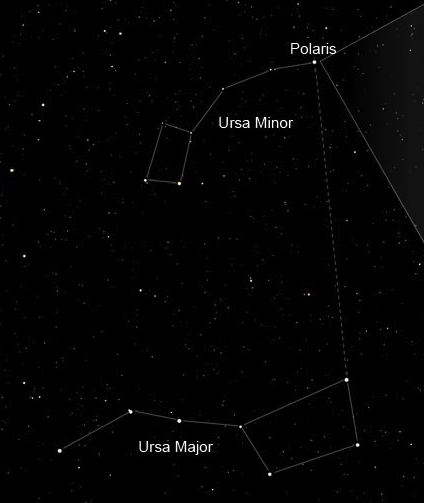 |
| Guovsahas | --- | Northern Lights/Aurora Borealis | 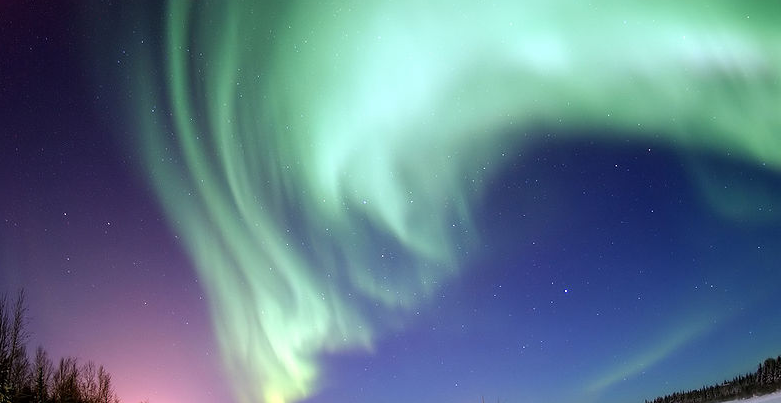 |
Sirius in Mediterranean lore is the top of the constellation Canis Major--the great dog. As Buonamico states, he is assisting Orion in his hunt. In Sámi, this star is known as Gállá, and is named for a character who was an ancestor of the Sámi. He is a hunter of the Great Elk.
The constellation of Orion is prominent in the winter sky. Orion is a hunter in Classic mythology, hunting Taurus (the bull) with the aid of his dog (Canis Major/Sirius). The three closely associated stars that are known as Orion's Belt were known by Italians as the Three Kings. In Sámi, they were three skiing hunters, the sons of Gállá, headed after the Great Elk.
The constellation known as Boötes is dominated by the bright star Arcturus. Boötes was also a hunter, but is in a different quadrant of the sky than Sirius and Orion. In Italian star lore, Arcturus is known as the Plowman. In Sámi, he is a demon named Favtna who prowls the night sky. Because the night sky lasted many more hours in Sápmi than in Italy, the Sámi could watch Favtna make a very long trek across the sky, starting in the north, proceeding along the eastern sky, high across the southern sky and finally setting in the west. Since in summer Sámi have virtually no opportunity to see the night sky, Sámi lore associates Favtna with the winter, and he personifies the threat that the winter presents. In Italy, in contrast, the star's rising and setting are associated with seasons for plowing, and thus he is called the Plowman.
The three stars that an American sees as the handle of the Big Dipper appeared to Sámi as a great bow, being shot by Favtna. Italians saw these same stars and the Plowman's plough. Sámi astral lore stated that Favtna shoots arrows at the Great Elk. One of his arrows will someday strike the Sky Nail (Polaris) and the sky will come crashing down.
Capella (the "she-goat") is a part of the constellation Auriga, located just above Taurus. Sámi saw the star as a Stállu ogre named Riibmagállis. He guards the Great Elk from the two sets of hunters (Gállá and his sons, located lower in the sky and to the left, and Favtna, located off in a different quadrant). He is regarded as a powerful figure in Sámi lore.
The constellation Taurus ("the bull") along with some further stars, made up the large Sámi constellation called the Great Elk. This was the beast being hunted by the other stars in the long winter's night.
The unmoving North Star was known in Sámi as the Sky Nail, the top of the tent that made up the sky. Medieval Christians knew the star as Stella Maris, the star of the sea, and associated it with the Virgin Mary.
Sámi attached great importance to Guovsahas--the lights that are heard. They are known in English as the Northern Lights or Aurora Borealis. The Sámi had various traditions about the Northern Lights but mostly found them intimidating. They were also associated with the dead.
Here is a star map of the constellations that Americans know to help you visualize the sky as medieval Italians or Sámi viewed it.
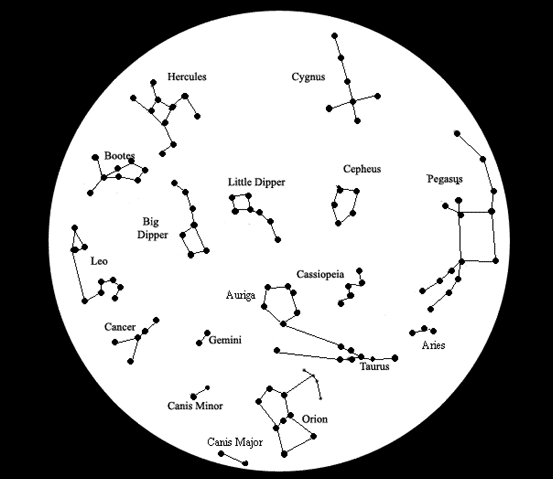 |
See if you can see the sky in the Sámi way, looking at the great elk whose back leg makes up Canis Minor and whose nose corresponds to the pointy part of Taurus, guarded above by Stállu (Auriga), and hunted from below by the Three Sons of Gállá (Orion's Belt) and Gállá (the top of Canis Major). Off to the left you can see Favtna (Boötes), firing an arrow across the bow (The Big Dipper's handle) at the elk. The Sky Nail (Polaris) lies at the end of the handle of the Little Dipper. Now look at the Italian sky: the Plowman (Boötes) with his plough (The Big Dipper's handle) hard at work, while the Three Kings (Orion's Belt) make their trek across the sky in search of the baby Jesus. The Virgin rests in the center of the sky, Polaris.
The abbess's account of the Magi is taken from the Legenda Aurea, a great compilation of saints' lives written by bishop Giacomo da Varrazze, (c. 1230-1298) whom we often refer to as Jacobus de Voragine. His work was one of the most popular books of the entire medieval era.
Bávlos receives a pilgrim's badge with a depiction of the Three Kings. The Three Kings were a prime symbol of pilgrims and often figured on badges. These badges made their way up to Sápmi through trade and became important treasures associated with healing. Bávlos is amazed to receive one as a casual gift. On his drum, Bávlos has fused the typical image of Gállá's sons--typically depicted skiing—with thre Three Kings by giving them little crosses.